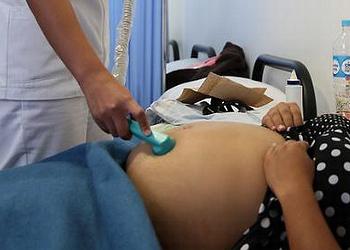
NEW YORK, New York, September 19, 2019 (ENS) – Around the world, more women and their children are surviving today than ever before, according to new child and maternal mortality estimates released today by United Nations groups led by the UN Children’s Fund, UNICEF, and the World Health Organization, WHO.
Since 2000, child deaths have reduced by nearly half and maternal deaths by over one-third, mostly due to improved access to affordable, quality health services.
Yet, despite progress, a pregnant woman or newborn child dies somewhere in the world every 11 seconds. An estimated 2.8 million pregnant women and newborns die every year, mostly of preventable causes, the new estimates show.

“In countries that provide everyone with safe, affordable, high-quality health services, women and babies survive and thrive,” said Dr. Tedros Adhanom Ghebreyesus, director-general of WHO. “This is the power of universal health coverage.”
Still, the new estimates reveal that 6.2 million children under 15 years died in 2018, and over 290 000 women died due to complications during pregnancy and childbirth in 2017. Of the total child deaths, 5.3 million occurred in the first five years, with almost half of these in the first month of life.
“Around the world, birth is a joyous occasion. Yet, every 11 seconds, a birth is a family tragedy,” said Henrietta Fore, UNICEF Executive Director. “A skilled pair of hands to help mothers and newborns around the time of birth, along with clean water, adequate nutrition, basic medicines and vaccines, can make the difference between life and death. We must do all it takes to invest in universal health coverage to save these precious lives.”
Women and newborns are most vulnerable during and immediately after childbirth. Children face the highest risk of dying in the first month, especially if they are born too soon or too small, have complications during birth, congenital defects, or contract infections.
About a third of these deaths occur within the first day and nearly three quarters in the first week alone.
The estimates also show vast inequalities worldwide, with women and children in sub-Saharan Africa facing a substantially higher risk of death than in all other regions.
Levels of maternal deaths are nearly 50 times higher for women in sub-Saharan Africa and their babies are 10 times more likely to die in their first month of life, compared to high-income countries.
In 2018, one in 13 children in sub-Saharan Africa died before their fifth birthday. This is 15 times higher than the risk a child faces in Europe, where just one in 196 children aged less than five dies.
Women in sub-Saharan Africa face a one-in-37 lifetime risk of dying during pregnancy or childbirth. By comparison, the lifetime risk for a woman in Europe is one in 6,500.
Sub-Saharan Africa and Southern Asia account for more than 86 percent of global maternal and child deaths. Countries in conflict or humanitarian crisis often have weak health systems that prevent women and children from accessing essential lifesaving care.
For children who survive the first month, infectious diseases such as pneumonia, diarrhea and malaria account for the most deaths globally. In older children, injuries, including road traffic injuries and drowning become important causes of death and disability.
Maternal deaths are caused by obstetric complications such as high blood pressure during pregnancy and severe bleeding or infections during or after childbirth, and increasingly due to an existing disease or condition aggravated by the effects of pregnancy.
Progress linked to universal health coverage
The world has made substantial progress in reducing child and maternal mortality. Since 1990, there has been a 56 percent reduction in deaths of children under 15 years from 14.2 million deaths to 6.2 million in 2018. Countries in Eastern and South-Eastern Asia have made the most progress, with an 80 percent decline in under-five deaths.
And from 2000 to 2017, the maternal mortality ratio declined by 38 percent. Southern Asia has made the greatest improvements in maternal survival with a nearly 60 percent reduction in the maternal mortality ratio since 2000.
Belarus, Bangladesh, Cambodia, Kazakhstan, Malawi, Morocco, Mongolia, Rwanda, Timor-Leste and Zambia are some of the countries that have shown substantial progress in reducing child or maternal mortality.
Success has been due to political will to improve access to quality health care by investing in the health workforce, introducing free care for pregnant women and children and supporting family planning. Many of these countries focus on primary health care and universal health coverage.
The global target for ending preventable maternal mortality – Sustainable Development Goal, SDG, target 3.1 – is to reduce global maternal mortality ratio to less than 70 per 100,000 live births by 2030.
The world will fall short of this target by more than one million lives if the current pace of progress continues.
The SDG target 3.2 for ending preventable deaths of newborns and children under age five is to reduce neonatal mortality to at least 12 per 1,000 live births and under-five mortality to at least 25 per 1,000 live births.
In 2018, 121 countries had already achieved this under-five mortality rate. Among the remaining 74 countries, 53 will need to accelerate progress to reach the SDG target on child survival by 2030.
Copyright Environment News Service (ENS) 2019. All rights reserved.
© 2019, Environment News Service. All rights reserved. Content may be quoted only with proper attribution and a direct link to the original article. Full reproduction is prohibited.
